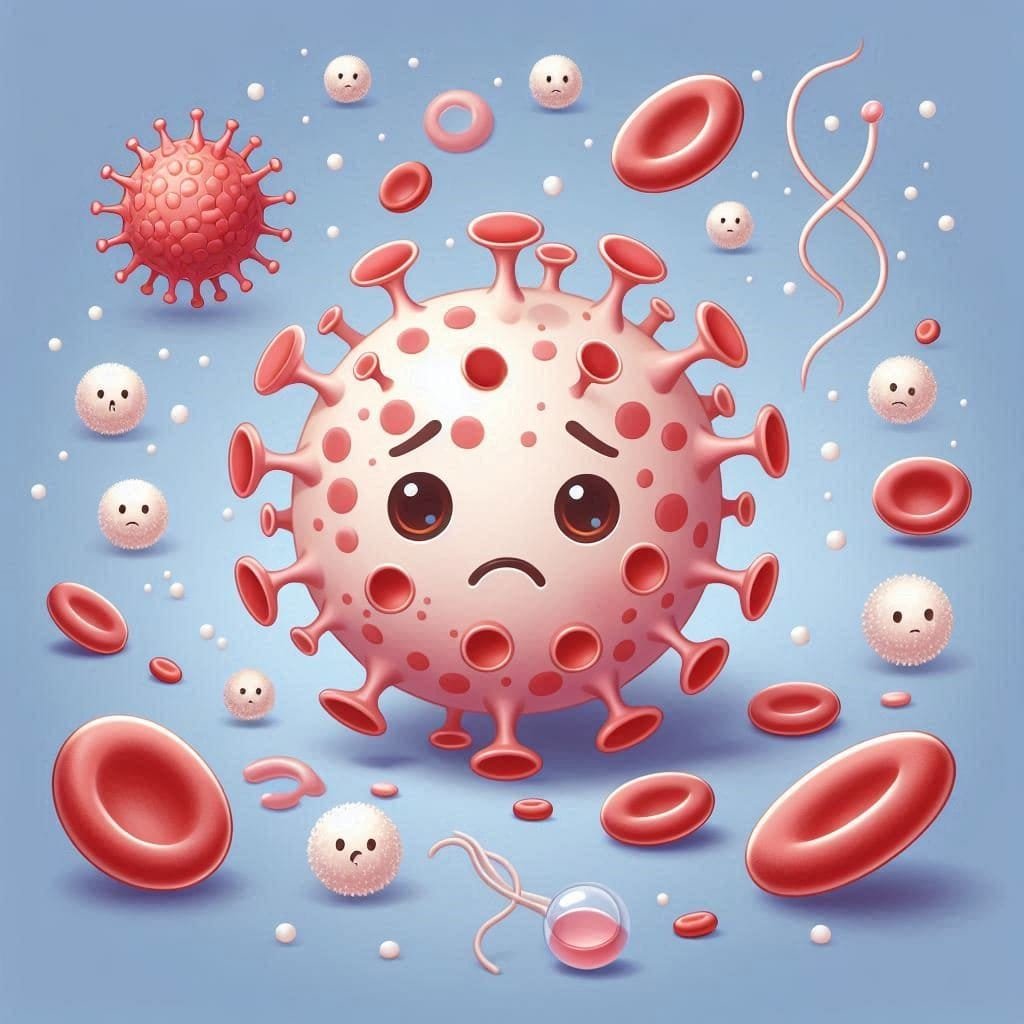Measles
Measles (or Rubeola), a highly contagious viral illness, has been a massive issue in general wellbeing for quite a while now. Despite the fact that there are useful weapons to immunize all ages and genders, measles continues impacting millions of individuals around the world annually.
This article aims to provide a thoughtful understanding of, its causes, impacts, management, and prevention strategies. Thus, teasing out information about possibly severe disease, we hope to raise concerns and stimulate the thrust towards prevention.

What is measles?
It is a viral infection that mostly infects the respiratory system and is likely to cause complications when not treated. The infection results from a virus called morbillivirus , which belongs to the paramyxovirus family. It has the trademark of giving red rash, fever and is very contagious, especially among persons who have never taken the vaccine.
How does it spread?
The infection spreads through different means:
- Airborne transmission: When the infected person coughs or sneezes, the virus remains airborne for as long as two hours from the time he contracts the flu.
- Direct contact: Simply touching such surfaces contaminated with the Measles virus and then touching the mouth, nose, or eyes can lead to the illness.
- Close private contact: It is likewise vital to offer time to be near a contaminated individual to expand the dangers of getting it.
- From pregnant or nursing mothers to their babies.
As such, one should not fail to highlight that it is incredibly transmissible. Actually, 90 percent of people who have not taken a vaccine and have close contact with infected people will be infected.
Signs and Symptoms
It is vital to acknowledge the signs and symptoms of the disease for an early diagnosis and management. The sickness commonly advances through a few phases:
- Early signs appear 8 to 12 days after being exposed and are mostly, fever, tiredness, barky cough, runny nose and red eyes.
- Shortly after that period, a rash covers the body and may last up to 10 days
- Other signs may involve: sore throat, white spots in the mouth, sensitivity to light and muscle tenderness.
How long is the condition contagious?
The person is contagious about 4 days before the apparition of the rash and about 4 days after.
Complications of the condition
In spite of the fact that a large number of people recover from measles without problematic concerns, complications can arise, especially in organized certain risky groups. A few potential entanglements include:
- Pneumonia
- Encephalitis (Inflammation of the brain, especially the cerebrum).
- Ear contaminations
- Birth-related complications (premature birth, low birth weight)
- Subacute Sclerosing Pan Encephalitis (SSPE)—a rare, however fatal, disease
This shows the need to prevent measles through the administration of vaccines and short-term medical management once symptoms appear.
Treatment
To the best of this author’s knowledge, there is no specific antiviral therapy available for measles. In any case, steady consideration can assist with overseeing side effects and forestall difficulties.
- Rest and hydration: Plenty of rest and liquids are the rudiments of recuperation. Variety towls and bags of crushed arena.
- Fever the board: Over-the-counter drugs, such as acetaminophen or ibuprofen, may help in reducing fever and suffering.
- Vitamin A enhancements: It must be noted that in regions where high rates of lack of vitamin A are reported, enhancements may be advised to reduce the negative effects’ risk.
- Antibiotics: Antibiotic agents do not eliminate contamination, but may be prescribed in the event of a secondary bacterial disease.
- Confinement: Thus, contaminated people must isolate themselves from the general public, particularly the ones who have not been vaccinated or have weak immune systems.
In extreme circumstances or where the people are at a higher risk, hospitalization could be very relevant when extending consideration.

Disease Prevention
The only sure way of preventing measles is by getting vaccinated. The immunization is normally given as a component of the MMR (Measles, Mumps, Rubella) antibody.
Overall endeavors to dispose of measles have gained huge headway; however, challenges remain:
- Inoculation crusades: Many countries conduct regular campaigns for booster vaccinations to increase the coverage of people’s vaccinations.
- Reconnaissance: Wellbeing assortments all through the globe keep an eye on Measles to react smoothly and further contain the infection.
- Training: Immunization general wellbeing wants to concentrate on educating on the importance of immunization and perceiving Measles side effects.
- Research: Progress are made in intend to invigorate immunization competence and create new system for Measles prevention and management.

Conclusion
It remains a core component of general wellbeing and is significantly observable in kids, though universally, it’s preventable through immunization. Empathy of the causes, impacts, and potential engagements can help people and networks work to relevant extents for self-protection as well as the protection of others.
In this manner, through great education, immunization, and rehearsing great cleanliness, we can all battle against the effect of measles around the world.
FAQs
Can adults at any given time get measles?
However, grownups can also contract measles if they have not been vaccinated or have not been infected before. In all earnest, measles in adults can every now and then be worsening than in children. If you are not too sure whether you have been immunized against the MMR, consult your medical provider for an MMR vaccine.
Can one get measles even if one has received vaccine shots?
Sometimes the Measles antibody is phenomenally strong; it is not entirely safe. A small number of inoculated people might, in any case, contract measles whenever presented with the infection. However, if an immunized person somehow gets Measles, then he/she usually has relatively fewer side effects and is not very contagious to other people.



